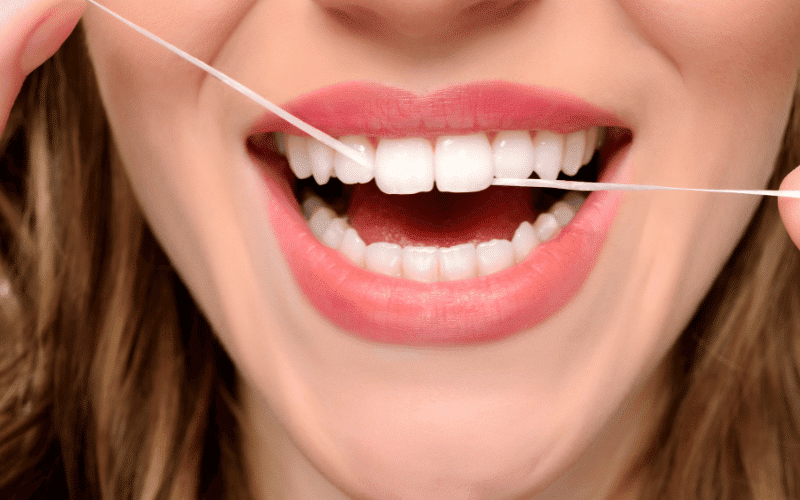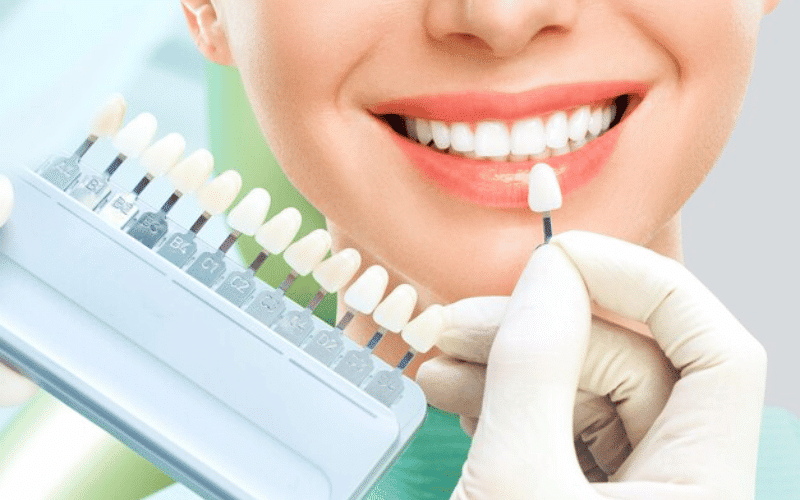
Why Flossing Between Porcelain Veneers Is Important?
Porcelain veneers, thin shells of ceramic bonded to the front of teeth, are renowned in cosmetic dentistry for transforming smiles by correcting discoloration, chips, or misalignment. Their popularity stems from their ability to produce dramatic aesthetic improvements with minimal tooth alteration. However, maintaining oral health with veneers requires attention to detail, particularly in flossing. Flossing between porcelain veneers is crucial for preventing plaque buildup and maintaining gum health, as it removes debris and bacteria from hard-to-reach areas. Proper flossing techniques can prolong the lifespan and preserve the beauty of veneers, ensuring a radiant smile for years to come.
The Role of Flossing in Oral Health
1. Plaque Removal: Flossing is essential for removing plaque between teeth and along the gum line, where toothbrushes may not reach effectively. This is especially crucial for individuals with porcelain veneers, as plaque buildup can compromise the integrity of the veneers and lead to gum disease.
2. Prevention of Decay: Flossing helps prevent tooth decay by removing food particles and plaque that can contribute to the formation of cavities. When veneers are in place, flossing becomes even more vital to maintain the health of the underlying teeth and prevent decay around the edges of the veneers.
3. Gum Health: Flossing is key to maintaining healthy gums, as it helps remove plaque and debris that can lead to gum inflammation and periodontal disease. Flossing between porcelain veneers is particularly important to prevent gum irritation and maintain the longevity of the veneers by preserving the health of the surrounding gum tissue.
4. Fresh Breath: Flossing helps prevent bad breath by removing food particles and bacteria from between teeth. This is especially beneficial for individuals with porcelain veneers, as maintaining oral hygiene ensures that the breath remains fresh and the veneers stay pristine.
5. Overall Oral Health: Flossing is integral to a comprehensive oral hygiene routine that includes brushing and regular dental check-ups. It plays a critical role in preventing dental problems and maintaining the health and longevity of teeth and restorations, such as porcelain veneers. Flossing between veneers ensures that oral health is not compromised and that the investment in cosmetic dentistry is protected for years.
Challenges of Flossing with Porcelain Veneers
1. Accessibility: Placing porcelain veneers can create tight spaces between the teeth, making maneuvering floss challenging. Flossing between porcelain veneers requires extra care and patience to ensure thorough cleaning without damaging or irritating the gums.
2. Friction: Porcelain veneers have smooth surfaces that may not provide enough friction for traditional floss to grip onto. This can make it difficult to effectively remove plaque and debris between the veneers and adjacent teeth. Specialized flossing tools, such as thin floss threaders or soft interdental brushes, may be needed for effective cleaning.
3. Sensitivity: Some individuals may experience increased sensitivity around their porcelain veneers, especially during flossing. The pressure exerted while flossing between porcelain veneers can exacerbate this sensitivity, causing discomfort or irritation. Gentle flossing techniques and using waxed or soft floss can help minimize discomfort while still effectively cleaning between the veneers.
4. Risk of Damage: Improper flossing techniques or overly aggressive force can damage the edges or surface of porcelain veneers. Care must be taken to avoid snapping or pulling the floss against the edges of the veneers, as this can lead to chipping or loosening of the restorations. Flossing between porcelain veneers requires a delicate touch to ensure the integrity of the veneers and the surrounding teeth.
5. Adaptation Period: Patients with newly placed porcelain veneers may need time to adjust to flossing between their restorations. Learning the appropriate flossing technique and finding the right flossing aids that work best for their specific situation may take some trial and error. Dentists can provide guidance and recommendations to help patients overcome the initial challenges of flossing with porcelain veneers and maintain optimal oral hygiene.
Techniques for Flossing with Porcelain Veneers
1. Gentle Pressure: When flossing between porcelain veneers, apply gentle pressure to avoid damaging the restorations or irritating the gums. Use a back-and-forth motion rather than forcing the floss up or down, which can dislodge or loosen the veneers.
2. Floss Threaders: Floss threaders are handy tools for navigating the tight spaces between teeth and veneers. Thread the floss through the loop of the threader, gently guide it between the teeth and under the veneers, and then slide the floss back and forth to clean effectively.
3. Waxed Floss: Waxed floss glides more smoothly between teeth and veneers, reducing the risk of catching or pulling on the restorations. The waxed coating helps the floss slide quickly without snagging, making it ideal for flossing between porcelain veneers.
4. Interdental Brushes: Interdental brushes can be used in addition to or instead of traditional floss for cleaning between porcelain veneers. These tiny brushes have soft bristles that can easily reach the tight spaces around the veneers to remove plaque and debris.
5. Regular Technique Review: Schedule regular dental appointments to review and refine your flossing technique with veneers. Your dentist can provide personalized guidance and recommendations based on your specific oral health needs and the condition of your veneers. By staying informed and proactive, you can ensure that your flossing routine effectively maintains the health and longevity of your porcelain veneers.
Benefits of Flossing Between Porcelain Veneers
1. Enhanced Oral Hygiene: Flossing between porcelain veneers removes plaque and debris from hard-to-reach areas, promoting better oral hygiene and reducing the risk of dental issues such as decay and gum disease.
2. Prolonged Veneer Lifespan: Regular flossing can help extend the lifespan of porcelain veneers by preventing plaque buildup and maintaining gum health. This ensures that the investment in cosmetic dentistry lasts longer and retains its aesthetic appeal.
3. Fresher Breath: Flossing between porcelain veneers removes food particles and bacteria that can cause bad breath, helping to keep breath fresh and maintain oral hygiene.
4. Reduced Risk of Gum Irritation: Proper flossing techniques between porcelain veneers help prevent gum irritation and inflammation. By keeping the gum tissue healthy, flossing contributes to the comfort and longevity of the veneers.
5. Improved Aesthetic Appearance: Flossing between porcelain veneers maintains the cleanliness and appearance of the teeth and gums, contributing to a brighter, healthier-looking smile. Consistent flossing ensures that the area around the veneers remains free from stains and discoloration, preserving the natural beauty of the smile.
Wrap Up!
In conclusion, the significance of flossing between porcelain veneers cannot be overstated in maintaining oral health and preserving the quality of these cosmetic enhancements. By diligently flossing between veneers, individuals can effectively remove plaque, prevent decay, and support gum health, thus prolonging the lifespan of their veneers and ensuring a radiant smile for years to come. As a vital component of daily oral hygiene, flossing is crucial in keeping the area around porcelain veneers clean and free from potential issues. Let’s prioritize flossing as part of our daily routine to achieve optimal oral health and preserve the beauty of our smiles. If you need assistance or want to know more about porcelain veneers or oral health-related issues, you can surely visit Singh Smile Care by booking your appointment slots!
Frequently Asked Questions
1. Why is flossing important for porcelain veneers?
Flossing is crucial for maintaining the health of your gums and the longevity of your porcelain veneers. Even though veneers cover the front surface of your teeth, bacteria can still accumulate around the edges and between teeth, leading to gum disease and potential issues with the veneers if left unchecked.
2. Can’t I skip flossing since my veneers cover my teeth?
While porcelain veneers improve the appearance of your smile, they don’t negate the need for proper oral hygiene. Skipping flossing can result in plaque buildup between teeth, which can eventually lead to gum inflammation, and decay, and even compromise the integrity of the veneers over time.
3. How should I floss between porcelain veneers?
Flossing between veneers requires a gentle touch to avoid damaging the restoration or irritating the gums. A soft, waxed floss or a floss threader can help navigate the edges of the veneers. It’s important to slide the floss gently up and down each side of the tooth and beneath the gumline to remove plaque and debris effectively without causing harm to the veneers or gums.





